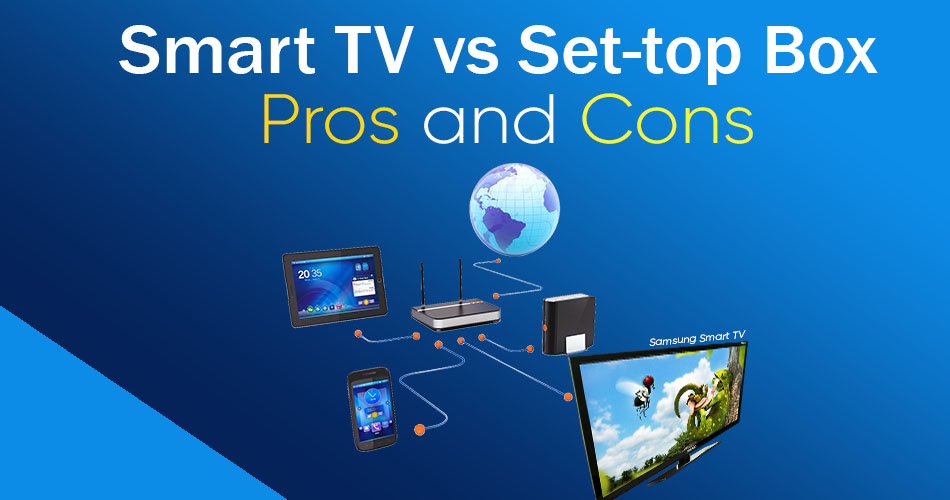
A lot of beginner cable cutters are often confused if they should invest in a smart TV or in streaming Set-top boxes when upgrading their TV experience.
This is because, most times when you have a good streaming Set-top-box at home, you do not need a smart TV and vice versa; since both devices perform very similar functions and will give you almost the same experience on any level.
As well, when it comes to giving up one for the other, a lot of novice cable cutters are often at a crossroad looking for the best option to take home without having to regret their choices at the end of the day.
This is often a rather easy decision to make. As a rule of thumb, if you are already happy with your present ‘dumb’ TV – with its sound quality, resolution, size and everything else; then you do not need a new TV, all you need is to make it smarter by connecting it with a Set-top box.
On the other hand, if you want more from your television, the smart TV will be your best bet. Most smart TV offer better picture and sound quality and are far bigger in sizes. Also, a smart TV eliminates the need to create extra space for the streaming Set-top-box as they come with their own inbuilt Wi-Fi card or ethernet port for internet connection.
Smart TVs offer a host of popular streaming apps such as Pandora, Netflix, Hulu, YouTube, etc. they often come with inner storage capacity and an app store for users to find other apps they may want to install.
The number of apps found on most smart TVs are however severely limited when compared to the number of those in most streaming Set-top boxes. This is because most streaming Set-top boxes run on the Android operating system and have the Google Play Store app – the largest mobile app market; installed for users to find and install apps on their device.
Newer smart TVs are however already catching up and some are already running on the software found in most popular Set-top boxes. Likewise, if you want to get the best of both worlds you might be better going with a smart TV that runs on a Set-top box operating system such as Roku or android OS.
Smart TVs are ridiculously expensive and you may be far better off with a regular TV and a streaming box if you are on a tight budget. Smart TV has an entry price level of around $600 while there are a few good streaming sticks that cost only about $50 and at most $300. As well, if you really want to a cut-cost and still get the upgraded TV feel, then you should consider going for a good HD or 4K regular TV with a Set-top box.
IPTV is the future of television and offers you almost unlimited contents – contents that are not locked geographically. The most smart TV comes with apps for IPTV streaming and you can connect your IPTV subscription with the TV for live shows, movies, and TV series. Not all smart TV, however, will allow you to install apps for IPTV.
Streaming Set-top boxes on the other hand are more open and will let you install apps easily for streaming IPTV contents.
One of the biggest downsides of getting a regular TV and a Set-top box is space. You will be needing extra space to place your streaming Set-top box and you will also end up with extra remote control. Thankfully, streaming sticks like the amazon firestick and the Roku stick are designed to integrate seamlessly with your TV and do not need any extra space. Others that are bigger will need space beside your TV.